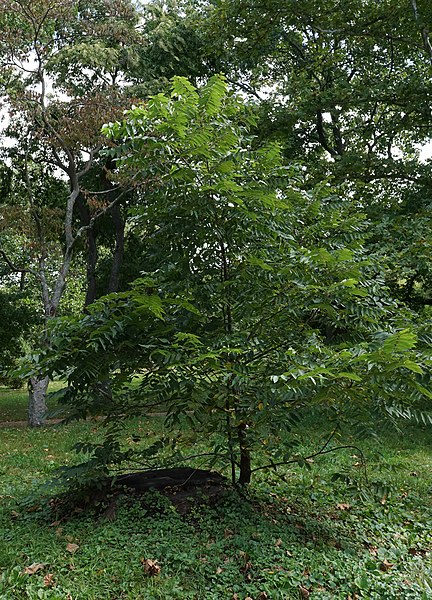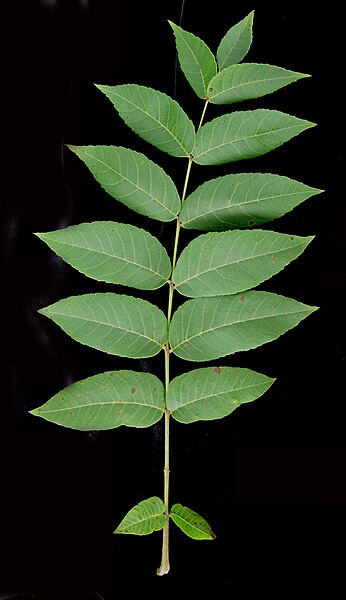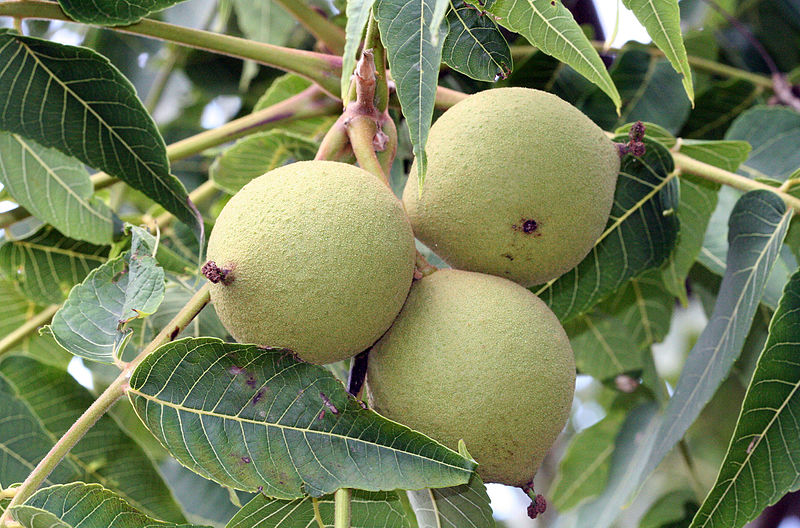Black Walnut Identification – Juglans nigra
Heads up
Black Walnut, or Juglans nigra, is a unique tree often recognized by its dark staining nuts and husks. The tree falls under the Juglandaceae family, known commonly as the walnut family.
Black Walnut’s fruit husks can produce a yellow dye. Its seeds have found their way into candy-making. The heartwood, or the dense central part of the tree trunk, is heavy and hard but doesn’t warp easily when dried, making it a top choice for furniture and cabinets.
Black Walnut: Key Parts in Photos





Where to find it
If you’ve ever strolled through areas with average moisture, such as hardwood and mixed forests, savannas, or banks, chances are you’ve passed by a Black Walnut. Especially if you’re in regions like the eastern United States stretching to Texas and even southeast Canada. These trees enjoy both sunlit spots and areas with partial shade.
How to identify Black Walnut
Standing tall, this tree can grow up to an impressive height of 130 feet. However, its height isn’t its only distinguishing feature. One of the key characteristics of the Black Walnut is its flowers. The tree has both male and female flowers on the same branch. The male flowers come in clusters known as “catkins” that are 2 to 4 inches long. These catkins dangle and can be found in the leaf axils of branchlets that are a year old. The male flowers range from yellowish to green and have multiple stamens, which are the parts of the flower that produce pollen. In contrast, female flowers are at the tip of the new year’s branchlets and appear in a short spike. If you observe closely, you’ll notice these female flowers have a green ovary that’s a bit sticky and a pair of stigmas, responsible for receiving pollen.
Look at its leaves, and you’ll find another trait of the Black Walnut. The leaves are compound. They grow in an alternate pattern, typically bunching at the tips of branches which gives an illusion of a whorl or circular pattern. Each leaf can possess anywhere from 12 to 19 leaflets that have a lance-oblong shape. Their edges are finely toothed, and while the top of the leaflet is dark green and sparsely hairy, the bottom is lighter.
The Black Walnut’s bark and stems tell a story of growth. As they age, they become smoother. A closer examination of the tree’s bark, especially on older trees, reveals a dark gray surface with rough ridges and furrows. Some of these mature trunks can be quite broad, reaching diameters over 3 feet.
The fruit of the Black Walnut is as unique as its leaves. They are typically spherical and measure 1 to 3 inches across. The outer husk is greenish, the inside houses a sweet nut with a hard shell. Often, you’ll find these fruits singly or in pairs at the branch tips.
